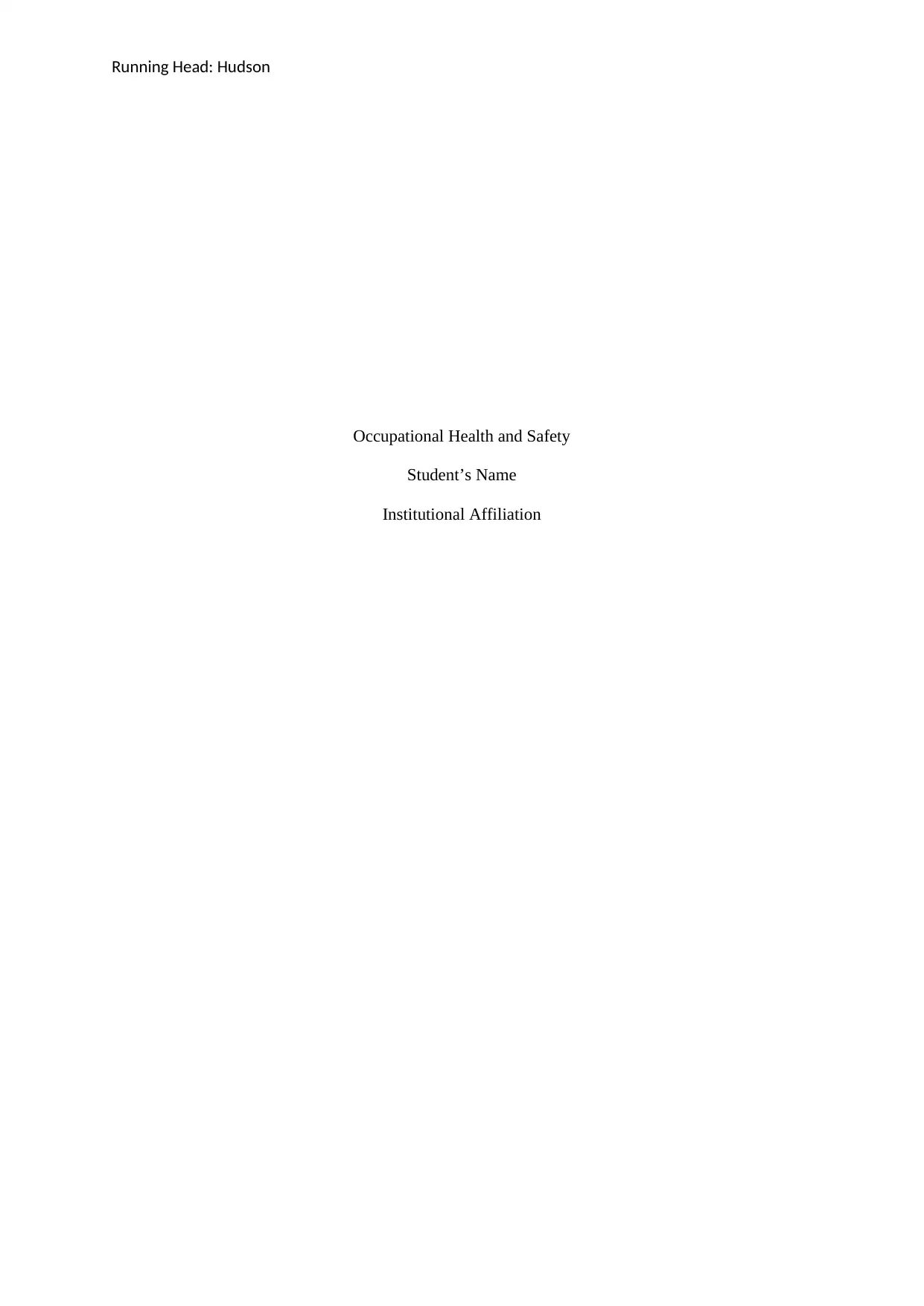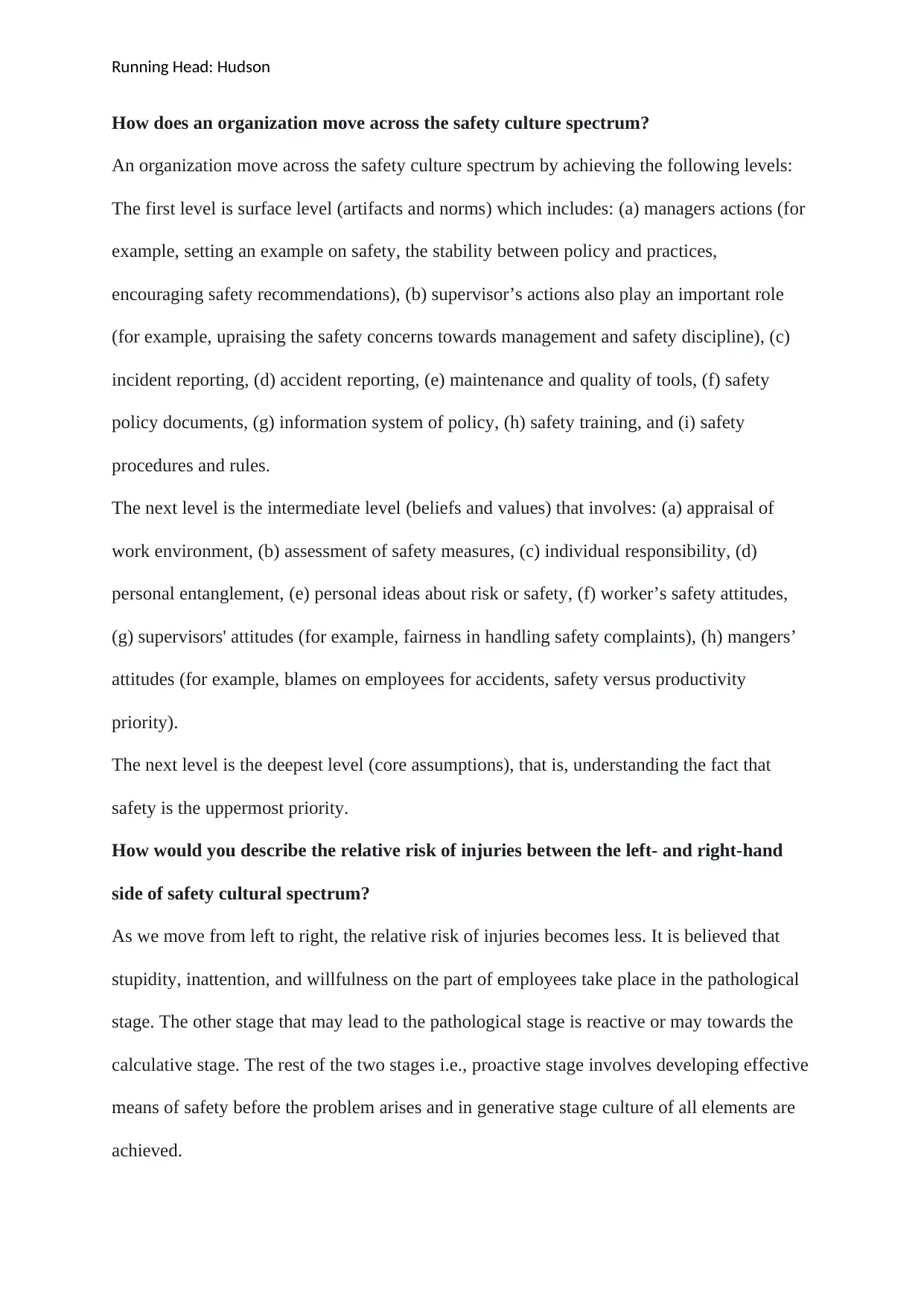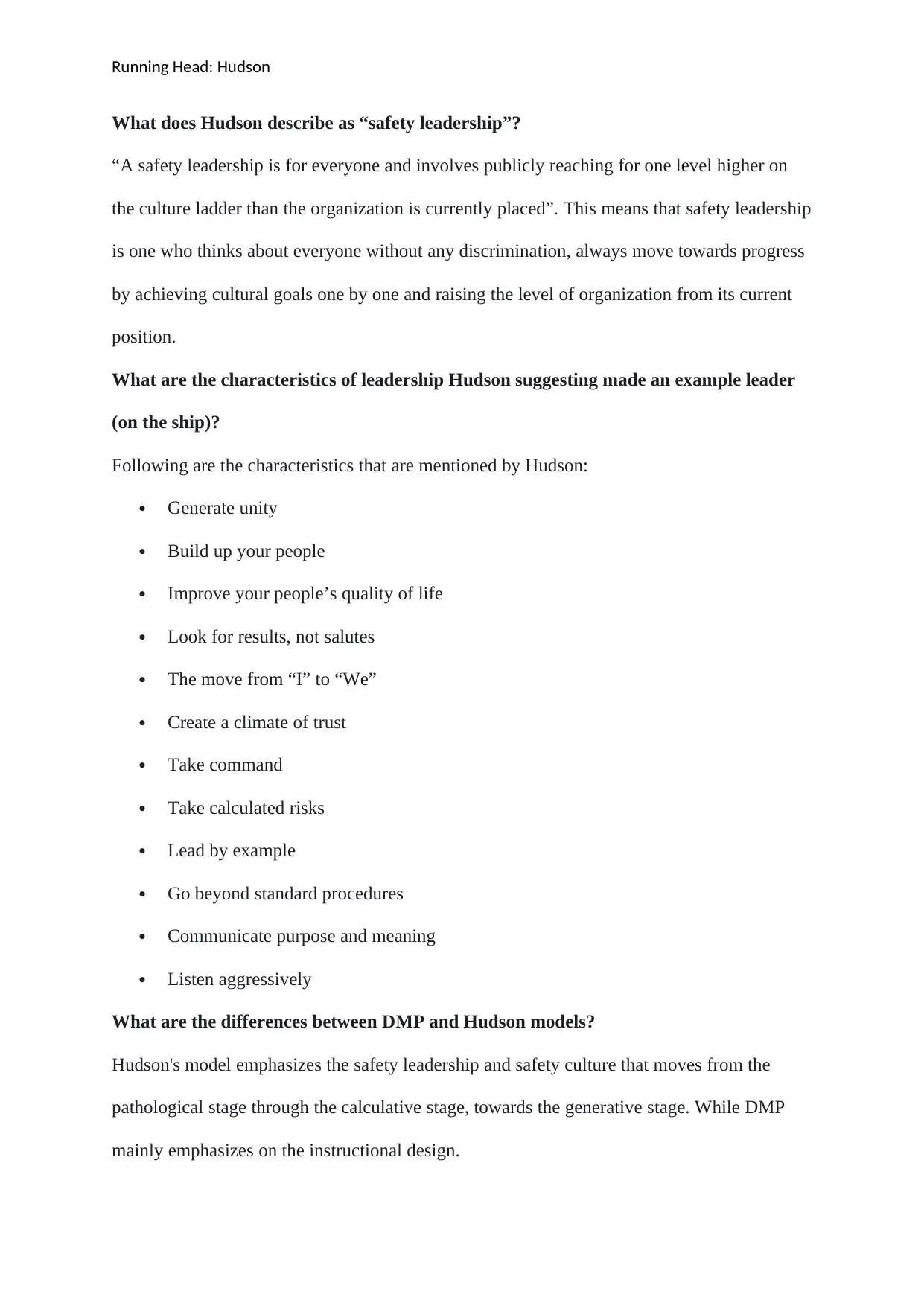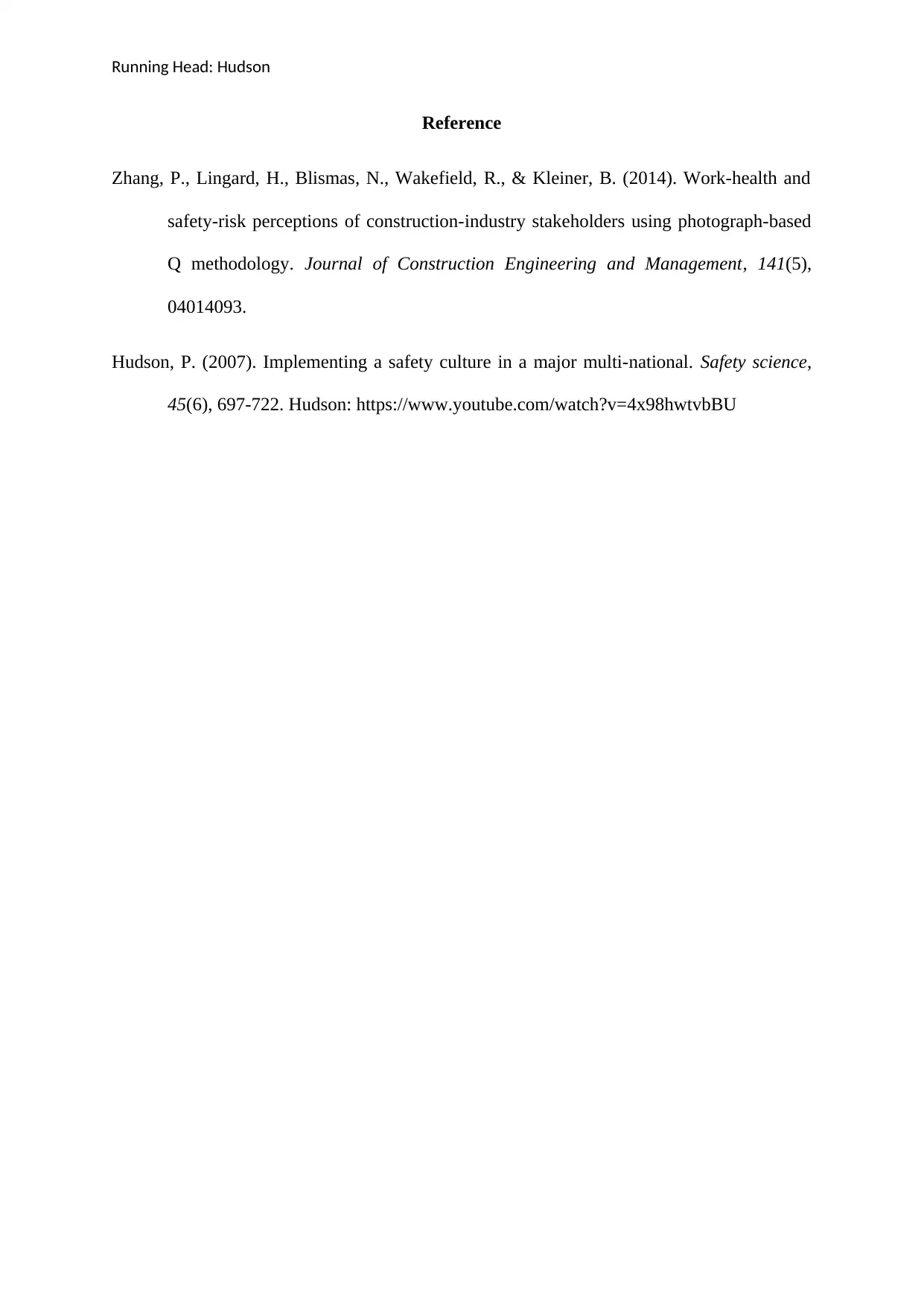Discussion: Hudson's Safety Culture and Leadership Models Analysis
VerifiedAdded on 2022/11/14
|4
|678
|65
Discussion Board Post
AI Summary
This discussion post analyzes Patrick Hudson's safety culture model, addressing key questions from a provided video and the assignment brief. The analysis explores how organizations progress across the safety culture spectrum, detailing the different levels from surface artifacts to core assumptions. It contrasts the relative risk of injuries across this spectrum and defines Hudson's concept of 'safety leadership,' emphasizing its inclusive nature and the importance of striving for higher cultural levels. The post also outlines characteristics of effective leadership, drawing on examples like Rex Tillerson's decision-making at Exxon Mobil, and compares Hudson's model with the DMP model, highlighting their distinct focuses on safety leadership and instructional design, respectively. The post references relevant sources, including a video and a research paper, to support its claims and provide a comprehensive overview of the topic.
1 out of 4





![[object Object]](/_next/static/media/star-bottom.7253800d.svg)